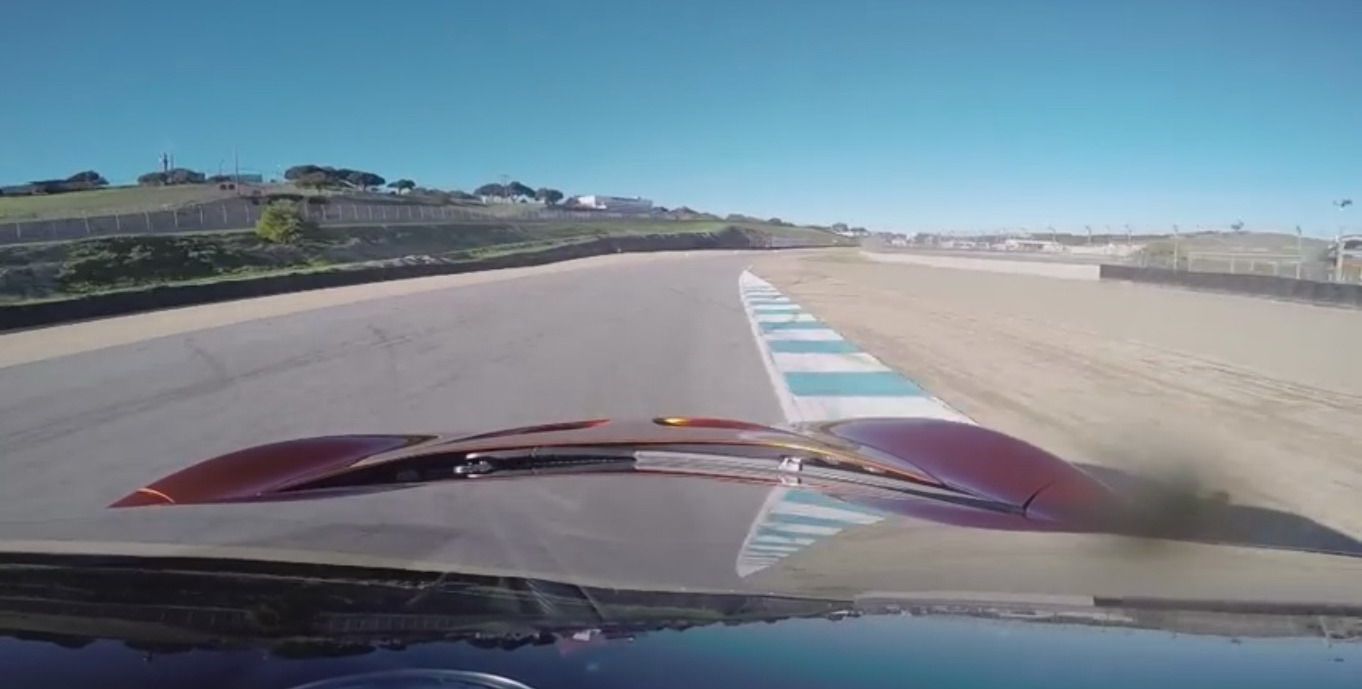Remember how in those old animated shorts, with the coyote chasing the roadrunner, you’d see the speedy blue bird zoom by in a blur of background while a fine trail of dust is whipped up behind him? That’s what it means to be cartoonishly fast.
The P1, for example, is cartoonishly fast. Everything about it is carefully engineered to elicit maximum velocity, and in the proper hands, not much can touch it. That fact is abundantly apparent from watching this external footage of a P1->ke4608 making a quick lap around Laguna Seca.->ke981 With all that wing and tire, the exit speed is simply demonic, and as pro-driver/instructor Mikel Miller puts every possible ounce of hybrid->ke147 power to the ground, the distance between the corners gets sucked into some kind of dimensional rift.
Unfortunately, despite Miller’s skill behind the wheel, the run is not totally clean. Sound restrictions meant only a few laps could be made, so the tires are cold, plus there’s some traffic blocking the way. However, seeing the P1 rage through turn five as Miller blows by some other P1 doing a lead-follow with an instructor in a 650S conjures memories of the tower fly-by scene in Top Gun. Also, check out the tail wag under braking, indicative of some pretty heavy rear-brake bias.
We can’t wait to see the P1 come back to lay down some serious lap times. The folks behind this video want to “reset the production car lap record” at Laguna Seca, and with a properly warmed up P1, an open track, and Mikel Miller driving, we think that’s definitely within reach.
Click past the jump to read more about the McLaren P1.
McLaren P1
The reasoning behind scientific notation is that sometimes, numbers are so large and mind boggling, that any attempts at wrapping your head around them are somewhat futile. It’s like an astronomer trying to describe galactic distances. Another good example would be an automotive journalist describing the McLaren P1. Therefore, I propose that henceforth, all performance numbers shall be measured in units of P1.
Let me explain. The P1 has 903 horsepower and 722 pound-feet of torque from a hybrid drivetrain consisting of a twin-turbo, 3.8-liter, V-8, petrol engine mated to an electric motor. So, if the base model 2015 Dodge Challenger has 305 horses, you could say that engine has roughly a third of a P1 for power (.33P1).
Make sense? No? Well, get used to it, because we think the P1 is from the future, and eventually, it’ll be the benchmark for all sports car technology (or at least, we hope it will be). It’s like a rocket ship you can drive on the street, with a carbon-fiber monocoque design, adaptive aerodynamics that alter its shape according to speed, active suspension that alter its stiffness according to road conditions, and regenerative braking that charges the battery. The transmission is a seven-speed, twin-clutch paddle shifter unit, and with a curb weight around 3,300 pounds, the P1’s performance numbers are practically nonsensical: 0 to 60 mph in 2.6 seconds, 0 to 100 mph in 4.7 seconds, quarter mile in 9.8 seconds, and a top speed of 217 mph.
With McLaren’s->ke284 halo vehicle vying for worldwide performance supremacy alongside cars like the Porsche 918 and LaFerrari,->ke4626 we’ll have to think of something to evolve our definitions of speed, because progress is certainly not going to slow down; believe it or not, there are even faster versions of these cars coming out, like the P1 GTR and FXX K. Cue the theme from 2001: A Space Odyssey.

